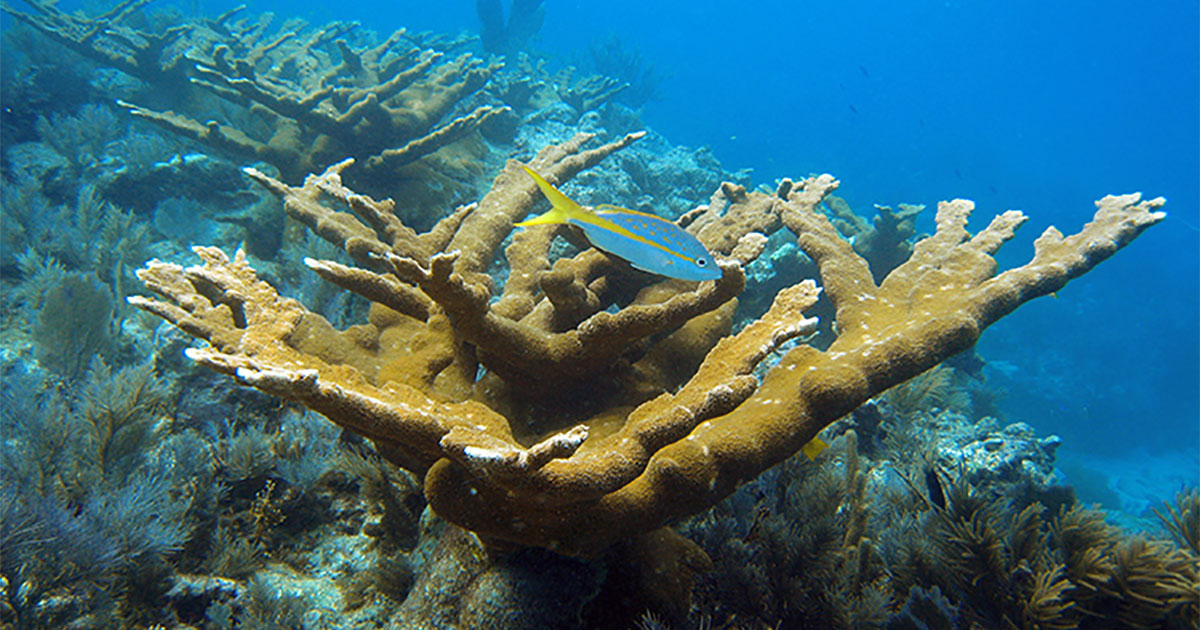NCCOS scientists and partners published research that predicts which locations along the Florida reef tract would be most conducive to the survival of nursery-reared Elkhorn coral. The species has been listed as threatened under the Endangered Species Act since 2006, making it a focus of coral restoration efforts over the last two decades.
Last year’s severe coral bleaching event in the region decimated the natural population even further, emphasizing the need to consider environmental limitations in restoration siting. Shallow-water corals host symbiotic photosynthetic algae in their cells that produce food from sunlight for them. Under stress, these corals expel the algae, leaving the corals without color, or bleached. The decline of Elkhorn coral is attributed to numerous factors, including thermal stress and disease.
The researchers used geographical data on Elkhorn coral in the Florida Keys dating back to 1999, along with a range of supporting environmental data, to develop the model that predicts optimal locations for the species. Water temperature, light intensity, nutrient concentrations, and salinity were part of the suite of environmental variables used in the analysis.
Model results show that the middle Florida Keys have unfavorable environmental conditions for Elkhorn coral, while Biscayne Bay, the Upper Keys, and the lower southwest Keys have the most suitable habitat for the species. Findings will help inform larger NOAA initiatives, such as the Mission: Iconic Reefs project, which aims to restore nearly three million square feet of the Florida reef tract by 2040.



